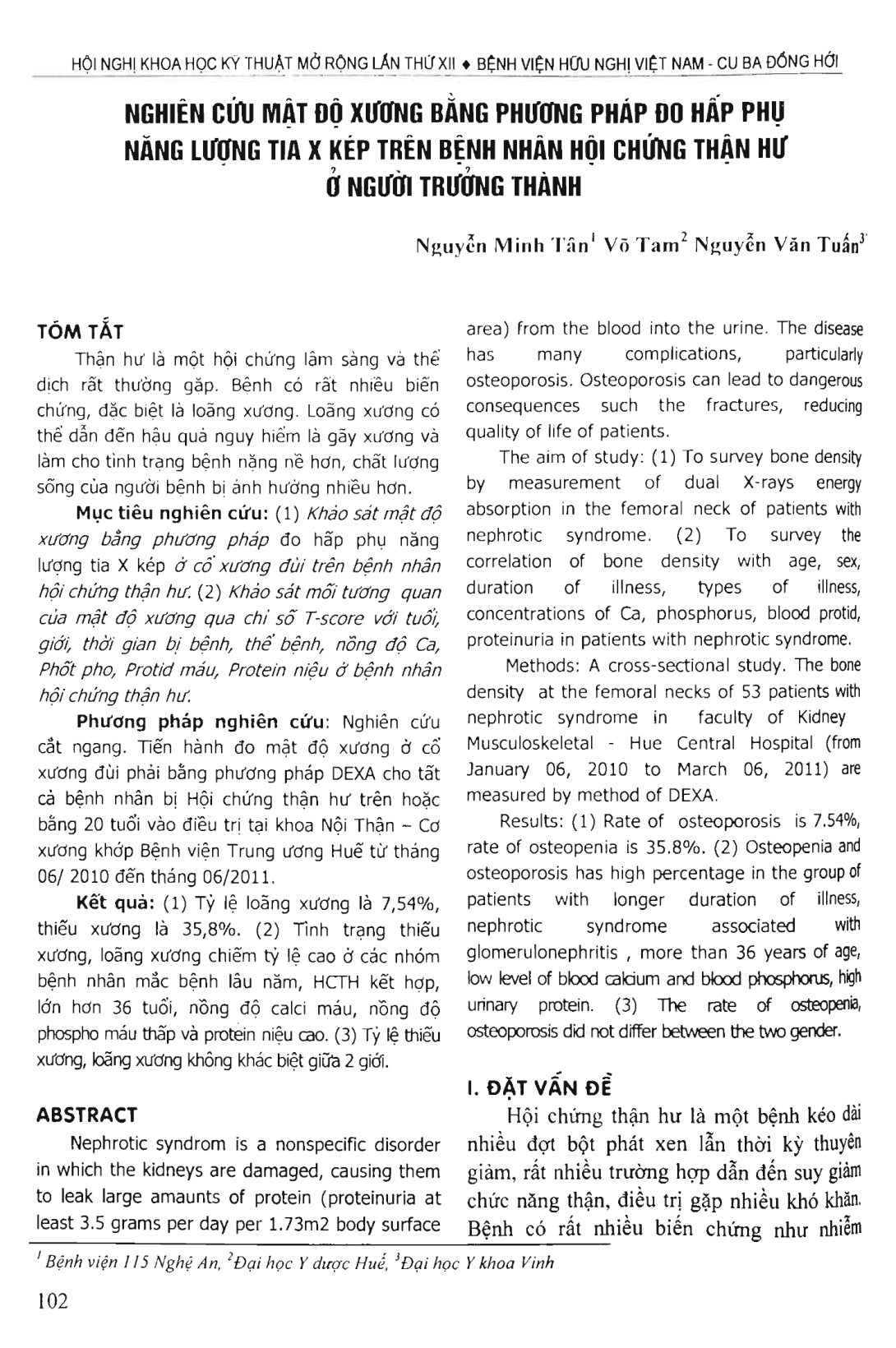
Nephrotic syndrom is a nonspecific disorder in which the kidneys are damaged, causing them to leak large amaunts of protein (proteinuria at least 3.5 grams per day per 1.73m2 body surface area) from the blood into the urine. The disease has many complications, particularly osteoporosis. Osteoporosis can lead to dangerous consequences such the fractures, reducing quality of life of patients. The aim of study: (1) To survey bone density by measurement of dual X-rays energy absorption in the femoral neck of patients witlt nephrotic syndrome. (2) To survey thel correlation of bone density with age, sex, duration of illness, types of illness, concentrations of Ca, phosphorus, blood protid, proteinuria in patients with nephrotic syndrome. Methods: A cross-sectional study. The bone density at the femoral necks of 53 patients with nephrotic syndrome in faculty of Kidney. Musculoskeletal - Hue Central Hospital (from January 6/2010 to March 6/2011) are measured by method of DEXA, Results: (1) Rate of osteoporosis is 7.54 percent, rate of osteopenia is 35.8 percent. (2) Osteopenia and osteoporosis has high percentage in the group of patients with longer duration of illness, nephrotic syndrome associated with glomerulonephritis, more than 36 years of age, low level of blood calcium and blood phosphorus, high urinary protein. (3) The rate of osteopenia, osteoporosis did not differ between the two gender.
- Đăng nhập để gửi ý kiến
